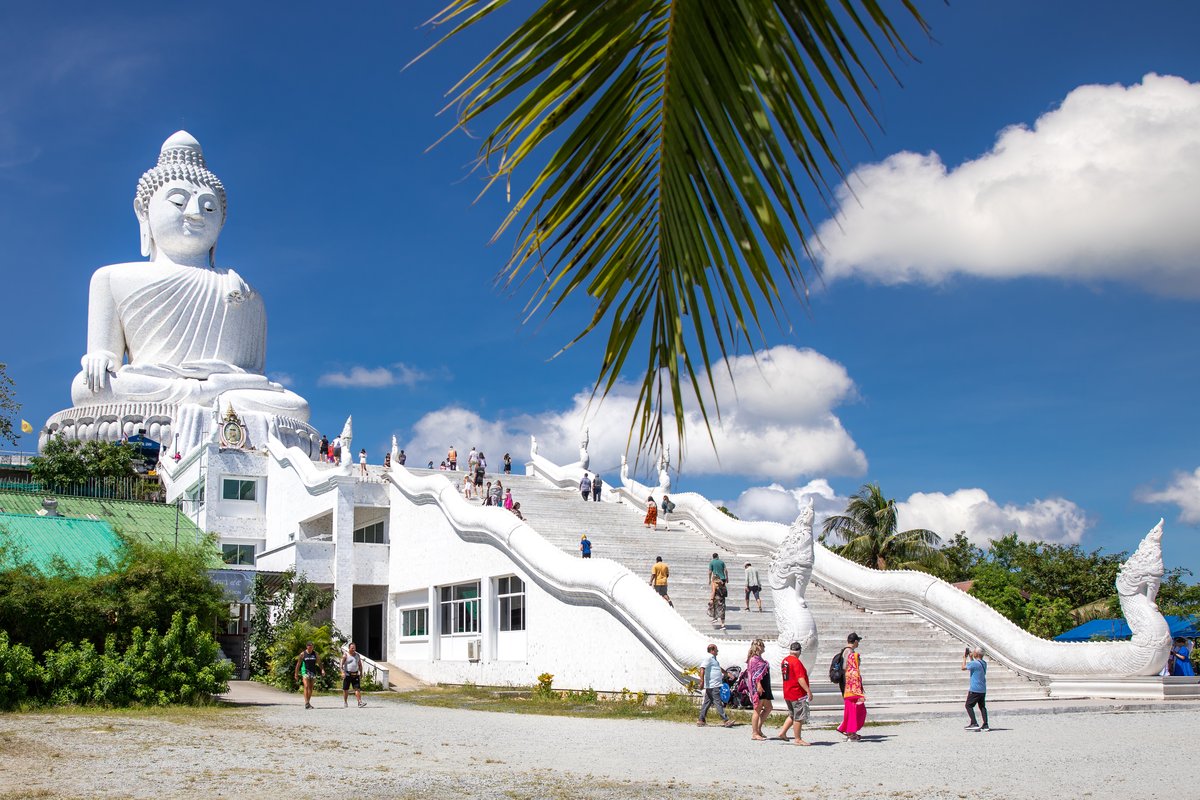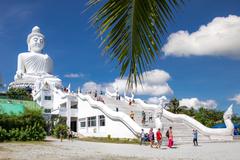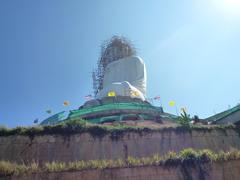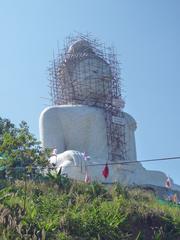
Big Buddha Phuket Visitor Guide: Tickets, Hours, History, and Tips
Date: 17/07/2024
Introduction
The Big Buddha, also known as Phra Phutta Ming Mongkol Eknakiri, stands as one of Phuket’s most iconic landmarks, drawing visitors from all corners of the globe. Nestled atop Nakkerd Hill, this colossal statue not only offers breathtaking panoramic views of the island and the Andaman Sea but also serves as a beacon of peace, unity, and cultural heritage. Conceived in the early 2000s and completed in 2014, the Big Buddha was erected to commemorate the 80th birthday of King Bhumibol Adulyadej and to promote peace and prosperity in the region (Phuket101). This towering figure, standing at 45 meters tall and made of white Burmese jade marble, symbolizes purity and tranquility, reflecting the deep spiritual and cultural roots of the Thai people. As a place of worship and meditation, the Big Buddha not only attracts tourists but also serves as a spiritual haven for locals and monks from nearby temples, such as Wat Chalong (Wat Chalong). This comprehensive guide aims to provide you with all the essential information for visiting the Big Buddha, including its history, architectural marvels, visiting hours, ticket information, travel tips, and nearby attractions.
Table of Contents
- Introduction
- History of the Big Buddha, Phuket
- Visitor Information
- Nearby Attractions
- Frequently Asked Questions (FAQ)
- Conclusion
Complete Guide to Visiting the Big Buddha in Phuket
History of the Big Buddha, Phuket
Origins and Construction
The Big Buddha is a relatively recent addition to Phuket’s landscape. Conceived in the early 2000s by a group of local Buddhists, the statue symbolizes peace and unity. Its construction began in 2004, funded primarily through public donations, reflecting strong community support. The statue was completed in 2014, marking a decade-long effort.
Architectural Details
Standing at 45 meters tall and 25 meters wide, the Big Buddha is one of Thailand’s tallest statues. Constructed from reinforced concrete and covered with Burmese white jade marble, it exudes a serene and majestic appearance. The base features intricate carvings and inscriptions dedicated to donors. The statue’s design follows traditional Thai Buddhist art, depicting the Buddha in a seated meditation posture.
Cultural and Religious Significance
The Big Buddha holds immense cultural and religious significance. It serves as a place of worship and meditation, symbolizing hope and resilience, especially after the 2004 Indian Ocean tsunami. The statue embodies the community’s ability to come together and rebuild in adversity.
Historical Context
Phuket’s rich history dates back to ancient times, influenced by Thai, Chinese, and Malay cultures. The island is a melting pot of traditions and beliefs, and the Big Buddha reflects this diverse heritage. Situated on Nakkerd Hill, it offers panoramic views of Phuket and the Andaman Sea.
Funding and Community Involvement
The Big Buddha’s construction was a community-driven project, funded by donations from individuals and organizations. Visitors can still contribute to the site’s maintenance by making donations or purchasing inscribed marble tiles. This ongoing support ensures the statue remains cherished for future generations.
Impact on Tourism
Since its completion, the Big Buddha has become one of Phuket’s top tourist attractions. It offers a spiritual experience, stunning views, and a peaceful atmosphere. The influx of tourists positively impacts the local economy, providing income for nearby businesses and creating jobs. The statue also promotes Phuket as a destination valuing its cultural and religious heritage.
Preservation and Future Plans
Ongoing efforts preserve the Big Buddha and its surroundings. A dedicated team of volunteers and staff maintain the site. There are plans to develop additional facilities, like meditation centers and educational exhibits, enhancing the visitor experience and promoting a deeper understanding of Buddhism and Thai culture.
Visitor Information
Visiting Hours
The Big Buddha is open daily from 6:00 AM to 7:00 PM. Early mornings and late afternoons are ideal times to visit to avoid crowds and enjoy cooler temperatures.
Tickets
Entry to the Big Buddha is free. However, donations are encouraged to help with the site’s maintenance and development.
Travel Tips
- Dress Code: Visitors should dress modestly, covering shoulders and knees, as it’s a religious site.
- Footwear: Comfortable shoes are recommended, as the site involves some walking and stairs.
- Best Time to Visit: Early morning or late afternoon for a more peaceful experience and better lighting for photos.
Nearby Attractions
- Wat Chalong: One of Phuket’s most important Buddhist temples, located nearby.
- Karon Viewpoint: Offers stunning views of the Andaman Sea and is a short drive from the Big Buddha.
- Kata Beach: A beautiful beach ideal for relaxation and water activities, located a few kilometers away.
Accessibility
The site is accessible by car or taxi, with ample parking available. While the main areas are wheelchair accessible, some sections may require assistance due to stairs.
Frequently Asked Questions (FAQ)
-
Is there an entrance fee for the Big Buddha?
- No, entry is free, but donations are welcome.
-
What are the visiting hours for the Big Buddha?
- The site is open daily from 6:00 AM to 7:00 PM.
-
Are there guided tours available?
- Yes, guided tours can be arranged through local tour operators.
Conclusion
The Big Buddha is a must-visit landmark in Phuket, offering a blend of spiritual enlightenment, cultural heritage, and breathtaking views. Whether you’re a history enthusiast, a spiritual seeker, or a curious traveler, the Big Buddha promises a memorable experience. Plan your visit and explore this iconic symbol of peace and unity.
References
- Complete Guide to Visiting the Big Buddha in Phuket, n.d., Phuket.net
- Discover the Big Buddha in Phuket, n.d., Phuket101
- Ultimate Guide to Visiting the Big Buddha in Phuket, n.d., Bigbuddhaphuket.com






